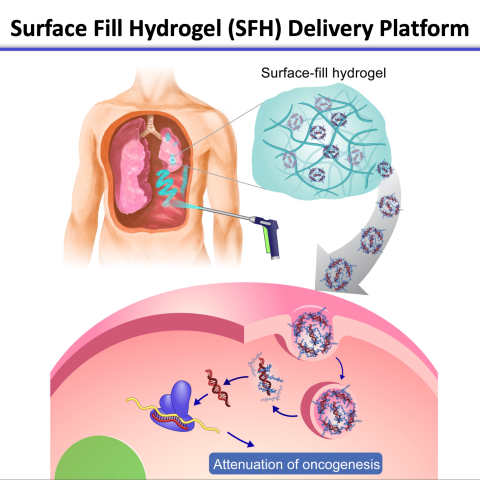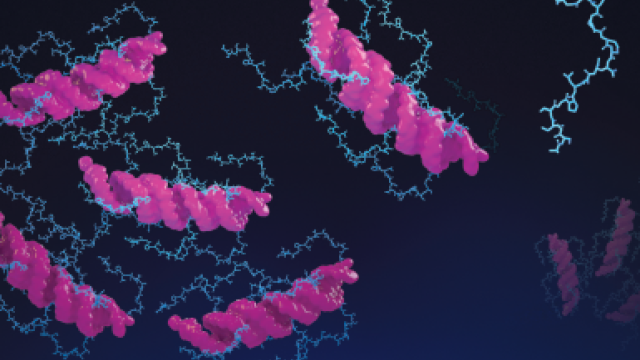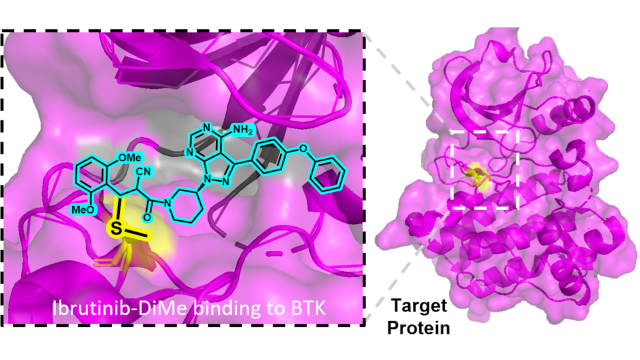
Diagram illustrates how the hydrogel platform delivers therapy directly to cancer cells.
Image Credit: Poulami Majumder, former NCI postdoctoral fellow in the lab of Joel P. Schneider.
Researchers from CCR engineered a hydrogel that can be sprayed or applied by syringe onto the surface of organs and to the linings of body cavities during surgery. This local application enables the treatment of trace residual surface cancer cells that might be missed during surgery, or it can be applied to treat the bulk tumor mass. The gel contains microRNA (miRNA) – tiny types of RNA that can block protein production – that are packaged as nanoparticles and released to enter cancer cells. They represent an emerging class of cancer therapy. These findings, published in Nature Nanotechnology Sept. 23, 2021, show promise as an innovative way to treat mesothelioma and other surface cancers.
Pleural mesothelioma grows on the surface of the chest cavity, making surgical removal challenging. What’s more, it’s difficult for conventional drugs to enter the tumors. Chuong D. Hoang, M.D, an Investigator in the Thoracic Surgery Branch who specializes in mesothelioma and other complex cancers involving the chest, thought that a new way to deliver treatment in these scenarios could help improve outcomes for people with mesothelioma.
Hoang sought out Joel P. Schneider, Ph.D., Chief of the Chemical Biology Laboratory, whose team has expertise in developing hydrogel-based delivery platforms with material properties suited to covering large surface areas. “I envisioned creating such a platform for mesothelioma, which is both poorly understood and hard to treat,” Hoang says. “Microdeposits of cancer always remain after surgery, but in mesothelioma, those areas become difficult to penetrate, an important reason why so many clinical strategies have not yielded convincing results. This new hydrogel coating worked particularly well during our surgical experiments to effectively treat microdeposit areas.”
Once the surface-fill hydrogel is applied as a thin coating on organ and body cavity surfaces, it will slowly degrade and release miRNA nanoparticles as cancer therapy in hard-to-reach gaps and crevices. Moreover, other kinds of drugs, including chemotherapy, can be mixed into the hydrogel.
Such treatment and delivery approaches are being tested for the first time in preclinical mouse models of mesothelioma, with promising efficacy results.
Poulami Majumder, Ph.D., a former NCI postdoctoral fellow in Schneider’s team, and Anand Singh, Ph.D., a postdoctoral fellow in Hoang’s team “took the lead on this project and helped us reach the finish line,” Schneider says. Hoang concurs, adding that this approach “could have tremendous implications for patients with these difficult cancers.”
Hoang and Schneider plan to continue working on this product with an eye toward refining the hydrogel formulation and scaling-up manufacture – important next steps toward reaching the goal of testing in humans. “Our clinical focus will remain on mesothelioma,” Hoang says. “This opens up new therapy possibilities and has the potential to be a game changer for people with mesothelioma.”


